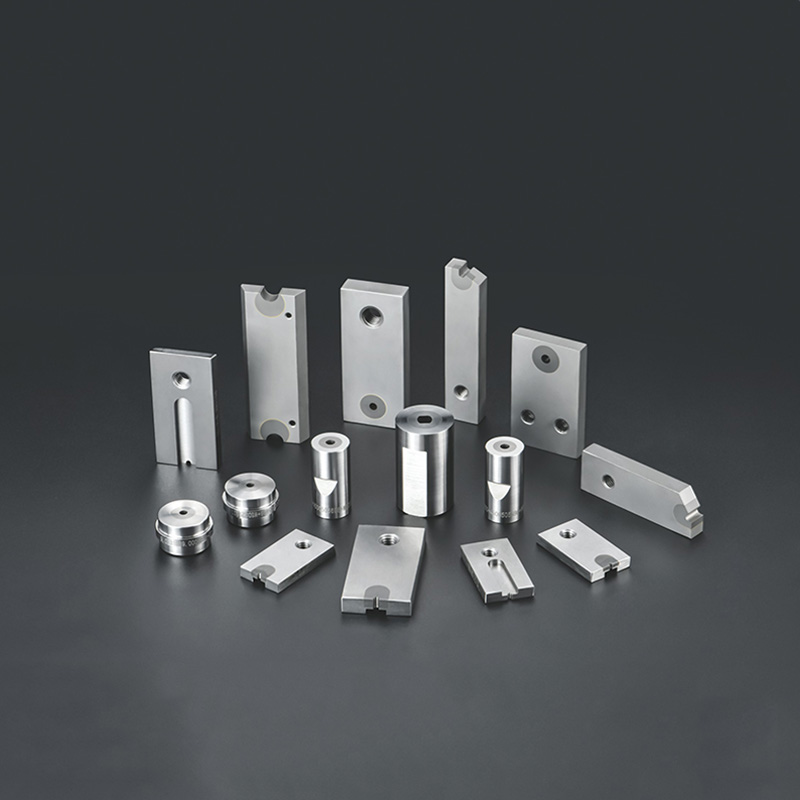Bolt Dies play a crucial role in the manufacturing of threaded fasteners, such as bolts and screws, that are used across various industries, including automotive, aerospace, and construction. Given the precision required in bolt production, it is vital to maintain these dies to ensure consistent, high-quality output over an extended period. Proper maintenance not only extends the lifespan of Bolt Dies but also ensures that they continue to produce accurate threads, minimizing defects and downtime.

1. Regular Cleaning of Bolt Dies
One of the most important aspects of Bolt Die maintenance is keeping them clean. Accumulation of metal chips, thread particles, and other debris can interfere with the die’s ability to produce accurate threads, leading to inconsistencies in the final product. Regular cleaning helps maintain the performance and longevity of the die.
Cleaning Tips:
Use a Soft Brush or Air Blower: After each use, remove loose metal chips from the die using a soft brush or an air blower. This prevents buildup that could impact the threading process.
Soak in Solvent: For more thorough cleaning, soak the dies in an appropriate cleaning solvent to dissolve any oil or grease buildup. Be sure to follow the manufacturer's guidelines for solvent compatibility.
Avoid Harsh Abrasives: Do not use abrasive tools or harsh chemicals, as they can damage the die's surface and lead to uneven wear.
2. Proper Lubrication to Prevent Wear and Tear
Lubrication is essential in reducing friction and wear between the Bolt Die and the material being threaded. Proper lubrication ensures smooth cutting, minimizes heat generation, and extends the life of the die.
Lubrication Tips:
Use High-Quality Lubricants: Select a lubricant that is specifically designed for thread cutting and the materials being worked on. A high-quality lubricant reduces friction and helps maintain thread quality.
Apply Consistently: Apply lubricant evenly to the surface of the Bolt Die and the workpiece to ensure consistent performance. Excessive or insufficient lubrication can cause thread defects or excessive wear on the die.
Check Lubricant Levels Regularly: In automated systems, ensure that lubricant levels are monitored and replenished regularly. Lack of lubrication is a leading cause of premature die wear.
3. Sharpening Bolt Dies for Precision Cutting
As Bolt Dies are used, their cutting edges inevitably wear down, which can lead to poor-quality threads and increased scrap rates. Sharpening the dies ensures that they maintain their cutting performance and accuracy.
Sharpening Tips:
Inspect the Cutting Edges: Regularly inspect the cutting edges of the Bolt Die for signs of wear. If the edges appear dull or chipped, they may need sharpening.
Use the Right Equipment: Bolt Die sharpening should be done using specialized equipment designed for precision grinding. This ensures that the geometry of the die is maintained and the edges are restored to their optimal condition.
Avoid Over-sharpening: Over-sharpening can alter the geometry of the die, affecting the thread profile. Be sure to sharpen the die only as needed, and avoid excessive grinding.
4. Inspecting Bolt Dies for Wear and Damage
Frequent inspections are key to identifying wear or damage early, allowing for timely repairs or replacements. Regular inspection helps prevent unplanned downtime and ensures that bolt production remains consistent and of high quality.
Inspection Tips:
Check for Cracks or Chips: Inspect the die for any visible cracks, chips, or other signs of damage. These can compromise the accuracy of the thread and lead to product defects.
Examine Thread Profiles: Inspect the thread profiles of the Bolt Die to ensure they are sharp and consistent. Worn threads can cause thread deformities on the fasteners.
Measure Die Wear: Measure the wear of the cutting edges to determine if the die has lost its efficiency. This is particularly important for high-volume manufacturing, where wear can accumulate quickly.
Look for Heat Damage: Excessive heat buildup can damage the die’s surface, leading to reduced performance. Inspect the die for signs of overheating, such as discoloration or warping.
5. Storing Bolt Dies Properly
Proper storage is essential to prevent damage when the Bolt Die is not in use. Exposure to moisture, dust, or extreme temperatures can accelerate wear and decrease the lifespan of the die.
Storage Tips:
Keep Dies in a Dry, Clean Environment: Store Bolt Dies in a dry, clean area to prevent corrosion. Use protective covers to shield the dies from dust and moisture.
Store Dies Separately: If multiple dies are stored together, ensure that they are not in contact with each other to avoid chipping or scratching.
Use Protective Coatings: If the dies will be stored for an extended period, consider applying a protective coating, such as rust inhibitors, to prevent corrosion.
6. Replacing Worn Bolt Dies
Despite proper maintenance, Bolt Dies will eventually wear out due to extended use. It is crucial to recognize when a die needs to be replaced to maintain production quality.
Replacement Tips:
Monitor Die Performance: If you notice a decline in thread quality or an increase in production defects, it may be time to replace the die.
Use Quality Replacement Dies: When replacing Bolt Dies, choose high-quality, compatible dies that meet the specifications required for your production process.
Recycle Old Dies: Old or worn-out dies can be recycled or refurbished to reduce waste and save on replacement costs.
Bolt Die maintenance is an essential aspect of ensuring long-term performance and consistent, high-quality production. By regularly cleaning, lubricating, sharpening, and inspecting dies, manufacturers can extend the lifespan of their Bolt Dies, minimize downtime, and maintain precision in their threading operations. A well-maintained die not only improves the quality of threaded fasteners but also helps optimize the overall efficiency of the manufacturing process.











